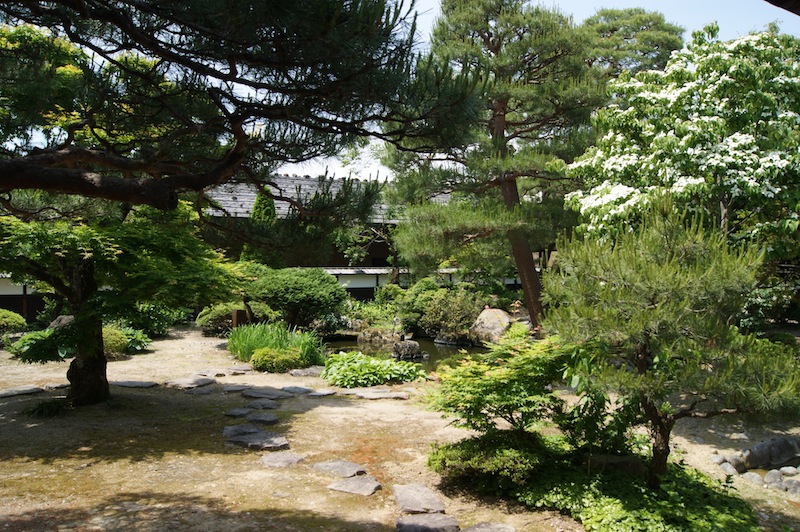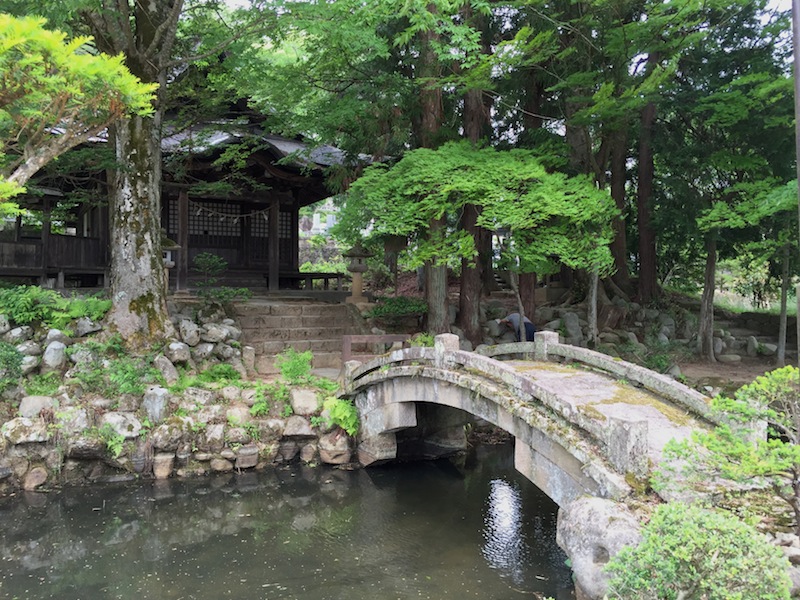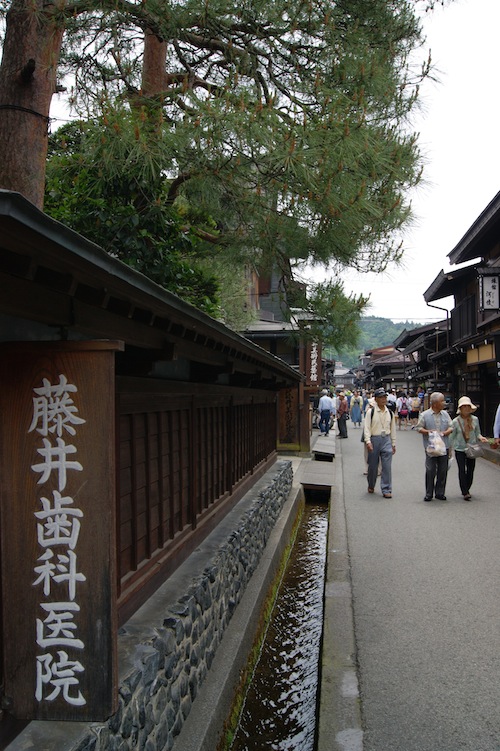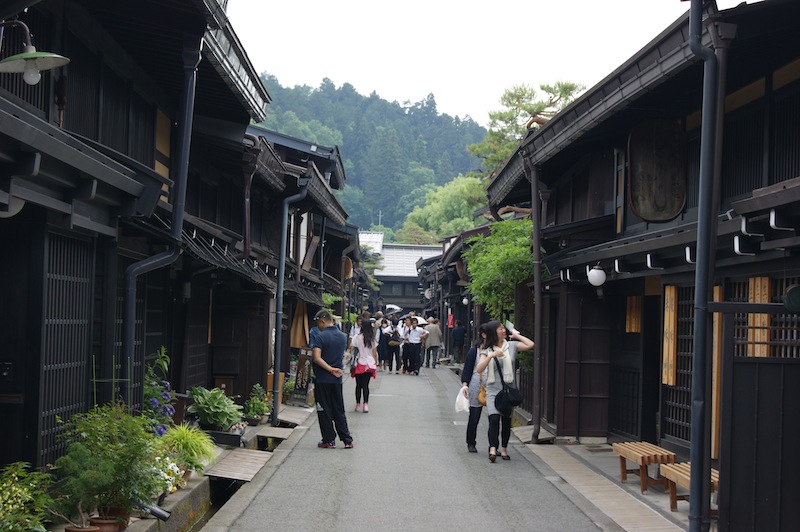At first sight Takayama looks much like any other Japanese town or city, with lots of post-war development that lacks any real charm or character.
Perhaps understandably, the priority after the devastation of the Second World War was putting roofs over heads rather than architectural quality. Perhaps too, the Japanese prefer practicality and resilience rather than style in a land devastated so regularly by earthquakes and other natural disasters. Or is it that they like to focus on interiors, on what they have to live in and look at day in and day out?
But Takayama does have plenty of characterful and historic buildings amid the drab modernity, once you get into the tourist-friendly city centre. We went out for a walk to discover them after a basic breakfast at the Best Western, a hotel that caters more for local tastes and large tour groups and that offered the most curious and unappealing breakfast buffet I’ve yet encountered. Most of the dishes were things I either couldn’t stomach at breakfast or just plain weird and unrecognisable. Conscious that my delicate constitution might rebel, I preferred to stay hungry.

The weather was kind to us as we walked to the Takayama-jinya, a sprawling set of wooden buildings that served as government offices from the 18th century, when the shogunate controlled Japan and Takayama was an important centre for timber production, through to 1969. Today they’re a tourist attraction. Typically Japanese, with paper screens and seductively soft tatami matting underfoot, the rooms once housed the clan allies of the ruling shoguns, who sat in judgement on locals and issued laws. It was an attractive spot, despite the hundreds of well-behaved school children who hovered around, and the gardens were predictably beautiful with streams and rocks, sculpted pines and moss.
We crossed the river to Takayama’s big draw, the historically important Sanmachi-suji district. Its streets (pictured top) are lined with more ancient wooden properties, some of them more than 300 years old and which these days house shops, sake breweries, cafes and restaurants. These handsome streets and grand buildings, along with Takayama-jinya, are testament to the wealth generated by this important trading centre in centuries past. There was some beautiful stuff on sale, including immaculate stationery, bottles of sake with colourful labels and exquisite lacquer work. We could’ve spent a fortune if we’d had any space in our suitcases but we did return later in our stay to buy a small lacquer box as a souvenir of our stay.

We stopped for tea and cake at one of the cafes, finding some peace away from the crowds. I tucked into green tea cake and Graham had the much more seductive looking Japanese version of trifle.
Later, to walk it off, we climbed the hills to the woods but our planned afternoon hike through the nearby Shiroyama Park ended up as a non-event. It was closed for repairs to the footpaths and there were warning signs about roving hungry bears, which isn’t something we have to deal with back home in Sydenham too often. Not wanting to encounter a particularly ravenous example, we took in the views of the city and then clambered down a dodgy footpath to the Teramachi and Shiroyama-koen districts, where we could explore a long line of temples, shrines and their landscaped grounds. On the outskirts of the town, they backed on to peaceful but gloomy woods and large, well-tended cemeteries. The temples were, of course, universally immaculate, gorgeous and mesmerising but there were lots of them and after a while I began to yearn for something different and just a little out of place.

Back in town we crossed streams and explored quiet back streets and it dawned on me then just how much water there is in Takayama. It pours off the hills into channels that run along the sides of the roads, onward into streams and the Miya-gawa river. Away from the traffic, all I could hear was the sound of water tinkling its way to the river under the force of gravity and it was very soothing indeed.
We stopped off at the Kusakabe heritage house, a large traditional building that showed us how (very important) people used to live in Takayama’s past, along with the paraphernalia that furnished their home. It was as minimalist as we’d come to expect if a bit gloomy. And finally, with sore feet, we relaxed over a beer by the river and watched large carp swimming in the shallow water. Above it were strung giant plastic fish that must’ve represented some sort of festival or celebration.

At night we found the much recommended Center4 Hamburgers, a tiny restaurant hidden behind an antiques shop, which served some of the best burgers ever, made out of the excellent and local Hida beef. Relaxed, friendly and popular, it was a real highlight of our stay. Afterwards, having done our homework, we discovered the Red Hill Bar, a small red cave of a place with a delightful and friendly owner and a busy crowd of tourists swigging beers. We chatted to an Aussie girl and her English friend as the drink flowed and the ciggie smoke swirled around us, and I was grateful that we’d finally found ourselves some nightlife in Takayama.

